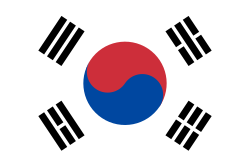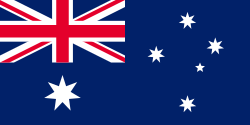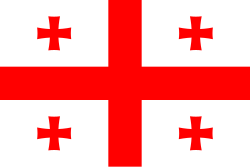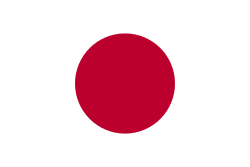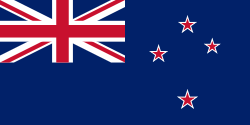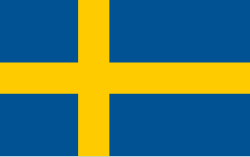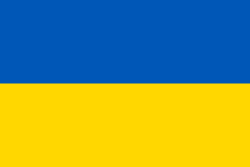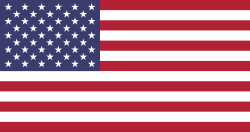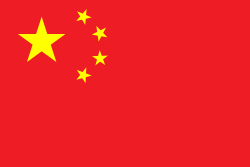Olympische Jugend-Winterspiele 2024/Eiskunstlauf
| Eiskunstlauf bei den Olympischen Jugend-Winterspielen 2024 | |
|---|---|
 | |
 | |
| Information | |
| Austragungsort | |
| Wettkampfstätte | Gangneung Ice Arena |
| Nationen | 25 |
| Athleten | 68 (34 |
| Datum | 25. Januar–1. Februar 2024 |
| ← Lausanne 2020 2028 → | |
Bei den IV. Olympischen Jugend-Winterspielen 2024 in Gangwon fanden vier Wettbewerbe im Eiskunstlauf statt. Austragungsort war die Gangneung Ice Arena. Im Gegensatz zu den vorangegangenen Austragungen wurde der Team-Wettkampf nun nicht mehr mit gemischten Nationenteams ausgetragen, sondern als klassischer Mannschaftswettbewerb.[1]
Qualifikation
Teilnahmeberechtigt waren Sportler die zwischen dem 1. Januar 2006 und dem 31. Dezember 2009 geboren wurden.[2]
Insgesamt konnten sich 72 Sportler bzw. Sportlerinnen für die Wettkämpfe qualifizieren, die maximale Anzahl pro Event und Nationales Olympisches Komitee (NOK) betrug 2, womit ein NOK also insgesamt 12 Sportler bzw. Sportlerinnen entsenden konnte. Einen fixen Startplatz erhielten jeweils die Medaillengewinner der Eiskunstlaufjuniorenweltmeisterschaften 2023. Alle anderen Nationen konnten einen weiteren Athleten anmelden, bis die Quote von zwölf für jeden Einzelwettbewerb, sieben für Paare und neun für Eistanzen erreicht worden war. Beim ISU Junior Grand Prix 2023/24 gab es weitere vier Plätze für jede Einzeldisziplin und je drei Plätze für Paarlauf und Eistanz.[3]
Daraus ergab sich folgende Verteilung der Quotenplätze:[4]
| NOKs | Männer Einzel | Frauen Einzel | Paarlauf | Eistanz | Team Event | Gesamt |
|---|---|---|---|---|---|---|
| 0 | 1 | 1 | 0 | Nein | 2 | |
| 0 | 1 | 0 | 0 | Nein | 1 | |
| 0 | 0 | 0 | 1 | Nein | 1 | |
| 1 | 1 | 0 | 0 | Nein | 2 | |
| 0 | 1 | 0 | 0 | Nein | 1 | |
| 1 | 1 | 0 | 1 | Ja | 3 | |
| 1 | 1 | 0 | 0 | Nein | 2 | |
| 1 | 0 | 0 | 1 | Nein | 2 | |
| 0 | 1 | 0 | 0 | Nein | 1 | |
| 1 | 0 | 0 | 1 | Nein | 1 | |
| 2 | 2 | 0 | 0 | Nein | 4 | |
| 1 | 1 | 1 | 2 | Ja | 5 | |
| 1 | 1 | 0 | 0 | Nein | 2 | |
| 1 | 0 | 0 | 0 | Nein | 1 | |
| 1 | 0 | 0 | 0 | Nein | 1 | |
| 1 | 2 | 1 | Ja | 4 | ||
| 1 | 0 | 0 | 0 | Nein | 1 | |
| 2 | 1 | 0 | 0 | Nein | 3 | |
| 0 | 0 | 1 | 0 | Nein | 1 | |
| 0 | 0 | 0 | 2 | Nein | 2 | |
| 1 | 0 | 0 | 1 | Nein | 1 | |
| 0 | 1 | 0 | 0 | Nein | 1 | |
| 1 | 1 | 1 | 1 | Ja | 4 | |
| 1 | 1 | 0 | 1 | Ja | 3 | |
| 0 | 1 | 0 | 0 | Nein | 1 | |
| Gesamt: 25 NOKs | 18 | 18 | 4 | 12 | – | 52 |
Zeitplan
| Zeitplan Eiskunstlauf[5] | ||||||
|---|---|---|---|---|---|---|
| Wettbewerbe | Januar | Februar | ||||
| 27. | 28. | 29. | 30. | 31. | 1. | |
| Männer Einzel | ||||||
| Frauen Einzel | ||||||
| Paarlauf | ||||||
| Eistanz | ||||||
| Teamwettbewerb | ||||||
| Entscheidungen | 0 | 0 | 2 | 2 | 0 | 1 |
| Kurzprogramm/-tanz | Kür/Kürtanz |
Bilanz
Medaillenspiegel
| Platz | Land | Gesamt | |||
|---|---|---|---|---|---|
| 1 | 2 | 1 | – | 3 | |
| 2 | 1 | – | 1 | 1 | |
| 3 | 1 | – | 1 | 2 | |
| 4 | 1 | – | – | 1 | |
| 5 | – | 3 | – | 3 | |
| 6 | – | 1 | – | 1 | |
| 7 | – | – | 1 | 1 | |
| – | – | 1 | 1 | ||
| – | – | 1 | 1 | ||
| Gesamt | 5 | 5 | 5 | 15 | |
Medaillengewinner
| Disziplin | Gold | Silber | Bronze |
|---|---|---|---|
| Männer Einzel | |||
| Frauen Einzel | |||
| Paarlauf | |||
| Eistanz | |||
| Mannschaftswettbewerb |
|
|
|
Ergebnisse
Männer Einzel
| Platz | Land | Athlet | Kurzp. | Kür | Gesamt |
|---|---|---|---|---|---|
| Punkte | Punkte | Punkte | |||
| 1 | Kim Hyung-yeom | 69,28 | 147,75 | 216,73 | |
| 2 | Adam Hagara | 75,06 | 141,17 | 216,23 | |
| 3 | Li „Dwyane“ Yanhao | 68,01 | 140,83 | 208,84 | |
| 4 | Jacob Sanchez | 76,38 | 123,90 | 200,28 | |
| 5 | Rio Nakata | 55,59 | 142,70 | 198,29 | |
| 6 | Raffaele Francesco Zich | 66,05 | 123,79 | 189,84 | |
| 7 | Haru Kakiuchi | 61,11 | 124,77 | 185,88 | |
| 8 | Tian Tonghe | 67,08 | 112,24 | 179,32 | |
| 9 | Georgii Pavlov | 61,97 | 116,85 | 178,82 | |
| 10 | David Li | 57,16 | 118,57 | 175,73 |
Kurzprogramm: 27. Januar 2024
Kür: 28. Januar 2024
Frauen Einzel
| Platz | Land | Athletin | Kurzp. | Kür | Gesamt |
|---|---|---|---|---|---|
| Punkte | Punkte | Punkte | |||
| 1 | Mao Shimada | 71,05 | 125,94 | 196,99 | |
| 2 | Shin Ji-a | 66,48 | 125,35 | 191,83 | |
| 3 | Yo Takagi | 67,23 | 115,97 | 183,20 | |
| 4 | Kim Yu-seong | 63,64 | 117,89 | 181,53 | |
| 5 | Inga Gurgenidse | 57,99 | 115,42 | 173,41 | |
| 6 | Sherry Zhang | 45,97 | 123,48 | 169,45 | |
| 7 | Gao Shiqi | 60,28 | 108,13 | 168,41 | |
| 8 | Iida Karhunen | 55,04 | 111,84 | 166,88 | |
| 9 | Anthea Gradinaru | 55,78 | 107,19 | 162,97 | |
| 10 | Tsai Yu-Feng | 56,46 | 100,18 | 156,64 |
Kurzprogramm: 28. Januar 2024
Kür: 30. Januar 2024
Paarlauf
| Platz | Land | Athleten | Kurzp. | Kür | Gesamt |
|---|---|---|---|---|---|
| Punkte | Punkte | Punkte | |||
| 1 | Kole Sauve Annika Behnke | 39,09 | 74,54 | 113,63 | |
| 2 | Jared McPike Cayla Smith | 36,80 | 61,20 | 98,00 | |
| 3 | Pau Vilella Carolina Campillo | 31,52 | 62,51 | 94,03 | |
| 4 | Kryshtof Pradeaux Peyton Bellamy-Martins | 29,03 | 59,33 | 88,36 |
Kurzprogramm: 27. Januar 2024
Kür: 28. Januar 2024
Eistanz
| Platz | Land | Athleten | Kurzt. | Kür | Gesamt |
|---|---|---|---|---|---|
| Punkte | Punkte | Punkte | |||
| 1 | Samuel Blanc Klaperman Ambre Perrier Gianesini | 62,39 | 92,96 | 155,35 | |
| 2 | Dylan Cain Olivia Ilin | 57,46 | 84,92 | 142,38 | |
| 3 | Atl Ongay-Perez Ashlie Slatter | 50,91 | 89,25 | 140,16 | |
| 4 | Lee Na-mu Kim Jin-ny | 56,58 | 82,82 | 139,40 | |
| 5 | Michael Boutsan Audra Gans | 52,99 | 83,83 | 136,82 | |
| 6 | Jáchym Novák Andrea Pšurná | 51,22 | 75,41 | 126,63 | |
| 7 | Ge Quanshuo Liu Tong | 50,92 | 75,58 | 126,50 | |
| 8 | Davide Calderari Mia Lee Mayer | 50,57 | 74,87 | 125,44 | |
| 9 | Jacob Stark Caroline Kravets | 47,98 | 67,72 | 115,70 | |
| 10 | Pietro Rota Zoe Bianchi | 41,50 | 64,33 | 105,83 |
Kurtanz: 28. Januar 2024
Kür: 30. Januar 2024
Mannschaftswettbewerb
| Platz | Land | Athleten | Männer | Frauen | Paarlauf | Eistanz | Gesamt |
|---|---|---|---|---|---|---|---|
| Punkte | Punkte | Punkte | Punkte | Punkte | |||
| 1 | Kim Hyung-yeom Shin Ji-a Lee Na-mu/Kim Jin-ny | 5 | 5 | – | 3 | 13 | |
| 2 | Jacob Sanchez Sherry Zhang Jared McPike/Cayla Smith Dylan Cain/Olivia Ilin | 4 | 4 | 4 | 12 | ||
| 3 | David Li Kaiya Ruiter Kole Sauve/Annika Behnke Michael Boutsan/Audra Gans | 2 | 2 | 5 | 1 | 9 | |
| 4 | Tian Tonghe Gao Shiqi Ge Quanshuo/Liu Tong | 3 | 3 | – | 2 | 8 | |
| 5 | Gianni Motilla Eve Dubecq Samuel Blanc Klaperman/Ambre Perrier Gianesini | 1 | 1 | – | 5 | 7 |
Datum: 1. Februar 2024
Einzelnachweise
- ↑ Winter Youth Olympic Games Gangwon 2024: How to watch figure skating at the 2024 YOG. 24. Oktober 2022, abgerufen am 11. Oktober 2023 (englisch).
- ↑ PROVISIONAL QUOTA PLACES FIGURE SKATING 2024 WINTER YOUTH OLYMPIC GAMES (YOG) GANGWON/KOR. Abgerufen am 11. Oktober 2023 (englisch).
- ↑ Communication No. 2596 - 2024 WINTER YOUTH OLYMPIC GAMES (YOG) GANGWON/KOR – JANUARY 19-FEBRUARY 1, 2024 ENTRIES/PARTICIPATION FIGURE SKATING (SINGLE & PAIR SKATING AND ICE DANCE). International Skating Union, 12. Oktober 2023, abgerufen am 30. Oktober 2023 (englisch).
- ↑ Communication No. 2605 2024 WINTER YOUTH OLYMPIC GAMES (YOG) GANGWON/KOR – JANUARY 19-FEBRUARY 1, 2024 ENTRIES/PARTICIPATION FIGURE SKATING – TEAM EVENT (SINGLE & PAIR SKATING AND ICE DANCE). 11. Dezember 2023, abgerufen am 14. Dezember 2023 (englisch).
- ↑ Figure Skating. Abgerufen am 11. Oktober 2023 (englisch).
Auf dieser Seite verwendete Medien
Pictograms of Olympic sports - Figure skating
Unicode Geschlechtersymbolder
Flag of Australia, when congruence with this colour chart is required (i.e. when a "less bright" version is needed).
See Flag of Australia.svg for main file information.Chinese Taipei Olympic Flag. According to the official website of Chinese Taipei Olympic Committee, Blue Sky(circle) & White Sun(triangles) above the Olympic rings is neither the National Emblem of the Republic of China, nor the Party Emblem of Kuomintang (KMT), but a design in between, where the triangles do not extend to the edge of the blue circle, as registered at International Olympic Committee in 1981 and digitally rendered in 2013. Besides, the blue outline of the five-petaled plum blossom is broader than the red one. Moreover, the CMYK code of the blue one and the Blue Sky & White Sun is "C100-M100-Y0-K0", and different from the Olympic rings (C100-M25-Y0-K0). Note that it's the only version recognized by IOC.
Chinese Taipei Olympic Flag. According to the official website of Chinese Taipei Olympic Committee, Blue Sky(circle) & White Sun(triangles) above the Olympic rings is neither the National Emblem of the Republic of China, nor the Party Emblem of Kuomintang (KMT), but a design in between, where the triangles do not extend to the edge of the blue circle, as registered at International Olympic Committee in 1981 and digitally rendered in 2013. Besides, the blue outline of the five-petaled plum blossom is broader than the red one. Moreover, the CMYK code of the blue one and the Blue Sky & White Sun is "C100-M100-Y0-K0", and different from the Olympic rings (C100-M25-Y0-K0). Note that it's the only version recognized by IOC.
Cyan check mark (✓) icon on a transparent background. Slight gradient between "Green30" (#14866D) and "Green50" (#00AF89)
Flagge des Vereinigten Königreichs in der Proportion 3:5, ausschließlich an Land verwendet. Auf See beträgt das richtige Verhältnis 1:2.
Flagge des Vereinigten Königreichs in der Proportion 3:5, ausschließlich an Land verwendet. Auf See beträgt das richtige Verhältnis 1:2.
Flag of Canada introduced in 1965, using Pantone colours. This design replaced the Canadian Red Ensign design.
Die quadratische Nationalfahne der Schweiz, in transparentem rechteckigem (2:3) Feld.
Autor/Urheber: maix¿?, Lizenz: CC BY-SA 2.5
A silver medal with the olympic rings inside
Autor/Urheber: maix¿?, Lizenz: CC BY-SA 2.5
A bronze medal with the olympic rings inside
Olympic Rings without "rims" (gaps between the rings), As used, eg. in the logos of the 2008 and 2016 Olympics. The colour scheme applied here was specified in 2023 guidelines.
Olympic Rings without "rims" (gaps between the rings), As used, eg. in the logos of the 2008 and 2016 Olympics. The colour scheme applied here was specified in 2023 guidelines.
Red "X"/Cross logic icon.

